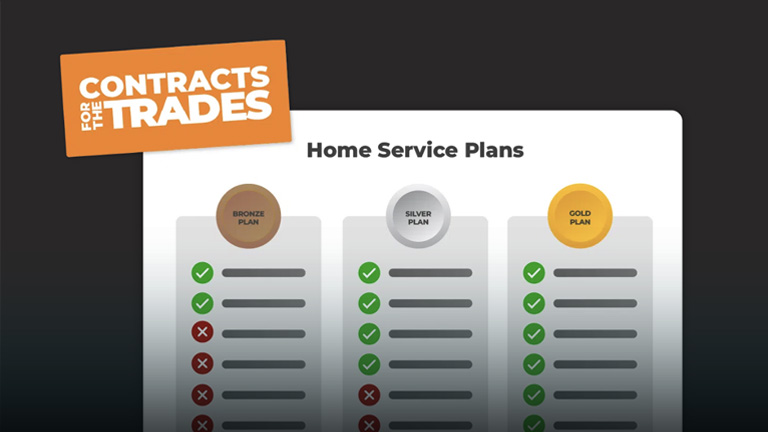5 Suggestions to Help You Better Manage Your Stock
May 17, 2021 | Read: 9 minutes

Want to manage your stock like an expert? Every service business has had it happen:
One of your engineers goes to a job, but when they arrive, they soon realise they don’t have all the parts needed to complete the work. And so it begins…
From checking in with the office to chase down the right part, to getting in touch with suppliers, to rescheduling the job all over again: it can be a saga!
That can leave your business in an uncomfortable position.
With the customer annoyed, the job remains unfulfilled, and hours have been wasted at your own expense, so it’s money down the drain. No wonder stock management can lead to a lot of headaches!
So: what solutions are there?
Below, we’ll consider why you may need to invest in a dedicated solution and cover 5 tips on how to better manage your stock in your field service business.

Why do you need to invest in managing your stock?
You know the old saying: “An ounce of prevention is worth a pound of cure.”
If you don’t have the right part when you need it, you lose chargeable time, in addition to losing a customer. Not only that, but a lack of preparation can damage your reputation.
What’s especially troubling is when successive issues continue to interrupt your services, which delays more jobs and leads to money being left on the table, especially when jobs end up costing you more in parts and labour than you first thought.

Finding a “cure” for these issues whilst dealing with day-to-day tasks can take a lot of effort; that alone should be enough to convince anyone that preventing problems is better than only reacting to them when they appear. If you’re experiencing issues like those above, then it’s likely you need some form of dedicated stock control, ideally managed through a software solution.
With a digital tool, it’s much easier to see, manage, and distribute your inventory to the right people, at the right time, for the right job.
This is pretty much guaranteed to improve KPIs like your first-time fix rate because you have efficient workflows that ensure you’re keeping your inventory at the right levels, rather than guessing or forgetting about parts instead.
As an office manager, you know that attention to detail makes a huge difference and as your company gets larger and more successful, it’s often the small details that can go unnoticed and cause bigger issues. That’s why establishing preventative measures by investing in an inventory management software is essential to save you from even bigger headaches.
With that in mind, let’s move on to the few tips to help you better manage your stock:
1. You need to keep on top of your suppliers
Which parts have you ordered? When do you expect delivery? How reliable have specific suppliers been in the past? Which parts from which suppliers are frequently returned and why? Is it because they were faulty or go unused? Who are your alternative suppliers?
You probably have a lot of this information in your head, and it may even be well organised back in the office if you have an individual taking care of stock through spreadsheets. However, you could save a lot of nervous energy if all of it was on your computer and at the fingertips of your staff.
That’s where a stock control software with a stockroom management app can be convenient. This solution offers a compact and convenient way of seeing what items are due in and due out. This makes it easy to check in arrived parts from your suppliers and can even help your staff to build out picking lists that can be easily prepared to send to a supplier and then, later, for the right engineer to collect!
Knowing where you can order supplies from, what quantities are needed, and also where to store everything will require you to stay on top of your suppliers so you can stay on top of your inventory.
📦🔨⚙️ Are you ready for Stock Control?
2. Keep track of every single part
If engineers do not bring back job sheets or they don’t tell your office which parts they used (or in the worst-case scenario, they lose the job sheets altogether), you’ll soon be heading into a downward spiral causing delays in invoicing, cash flow, and find that parts you thought were there weren’t even there to begin with.
A system can help manage your stock. You can keep track of every single one of these parts passing through your organisation and have a mechanism for replacing them whenever they’re used. It’s essential to the success of every job you do!
The industry jargon for this is “just-in-time” (or JIT) supply management. It’s a task that is virtually impossible to do as efficiently manually compared to using computer software.
You might have the best-organised staff in the world, but it’s often the case that software will help that team to work even more efficiently, giving you increased certainty that parts are ordered and readily available as and when your engineers need them.
That’s where fleet management software and parts tracking plays its biggest role.
With a comprehensive tool, your team can more reliably ensure that parts data is tracked and kept up-to-date, no matter where the item is. From stockrooms to warehouses, to vans: as your company grows, so will your storage solutions and the number of parts kept within them.
Being able to scan, store, and easily track parts could well be the solution you require.
3. You need an integrated system to manage your stock
To achieve either of those first two aims, you need an integrated system that tracks the entire movement of each individual part, so that you know exactly what action you need to take next.
Parts should be seamlessly requested, ordered from the supplier, checked into your company, checked out, installed, and invoiced to the customer, all handled through a single system.
For instance, with the “intelligent” categorisation of parts and appliances, if there’s an emergency, your engineers will more likely be able to get their hands on an essential item at a moment’s notice. If they can check parts availability remotely via a smartphone or tablet – even better!
Our free stock control spreadsheet can be a good place to start, but you’re probably here because you’re ready for a professional software solution to take things further.
Stock control is an advanced feature but, if you take Commusoft for example, it’s something you can build up to use later. That’s good to know for when you feel your business is ready and all within the comfort of software you’re already used to using!
4. Take it to the next level with a one-stop solution
Easy-to-use tools that support essential tasks and help you get work under control is a great reason to invest in quality job management software. With flexible options, it puts you in a stronger position to take things further when the time is right for you, without overwhelming you by having to take on too much, too soon.
That is, of course, assuming you’ve chosen software that allows you to adapt easily as you grow.
For instance, some aspects of stock control may be more advanced than you currently need. That’s not to say you won’t ever need them, but instead, it’s better to focus on tools that support you in other ways, like improving how you manage parts for jobs and fill in purchase orders, which would likely come before you need to think about automated restocking solutions.
If you make essential but often mundane tasks easier to control, you’re saving time and effort that you can then invest elsewhere. Later, you can take steps to upgrade your software and automate even more tasks, such as invoicing and purchase orders, as well as centralise your customer database.
Dedicated stock control software is the level-up that will truly make a difference when it comes to saving time and money on parts. It’s always important to consider how some tools could go on to impact others, but when everything is part of a single solution, you know you can reliably scale your business more quickly when it suits you.
5. Identify which parts are the most profitable
Of course, one particularly important reason to better manage your stock is to both save and make more money. With stock/inventory data streamlined and increased visibility across the entire company, you can easily see where you’re leaking cash, or discover which expensive parts you’ve been holding on to because no one’s checked them in properly.
With historical data of parts procurement and sales, you can generate reports that enable you to identify what’s been most profitable, as well as what hasn’t. This might even highlight other issues, such as how much your charging per hour for labor, or even indicate where there’s room to expand and do work that’s in greater demand.
On top of that, and as you likely already know, your relationship with a supplier is a two-way street. If your company raises purchase orders effectively, pays the supplier on time, and is generally a joy to work with, you will find yourself in a stronger negotiating position to purchase more effectively and benefit from deals and discounts.
The result? Better cash flow and a vastly improved bottom line!
Feel like the parts problem is on the way to getting sorted?
Commusoft’s parts management software feature allows you to manage your stock like an expert. But if you really want to go toe-to-toe with the big guys, you’ll need something bigger and better, which is where field service management software comes in!
If you’d prefer to go on a visual journey, check out our Stock Control Webinar.
Feel free to reach out to our team and discover more about the best solutions for you!









